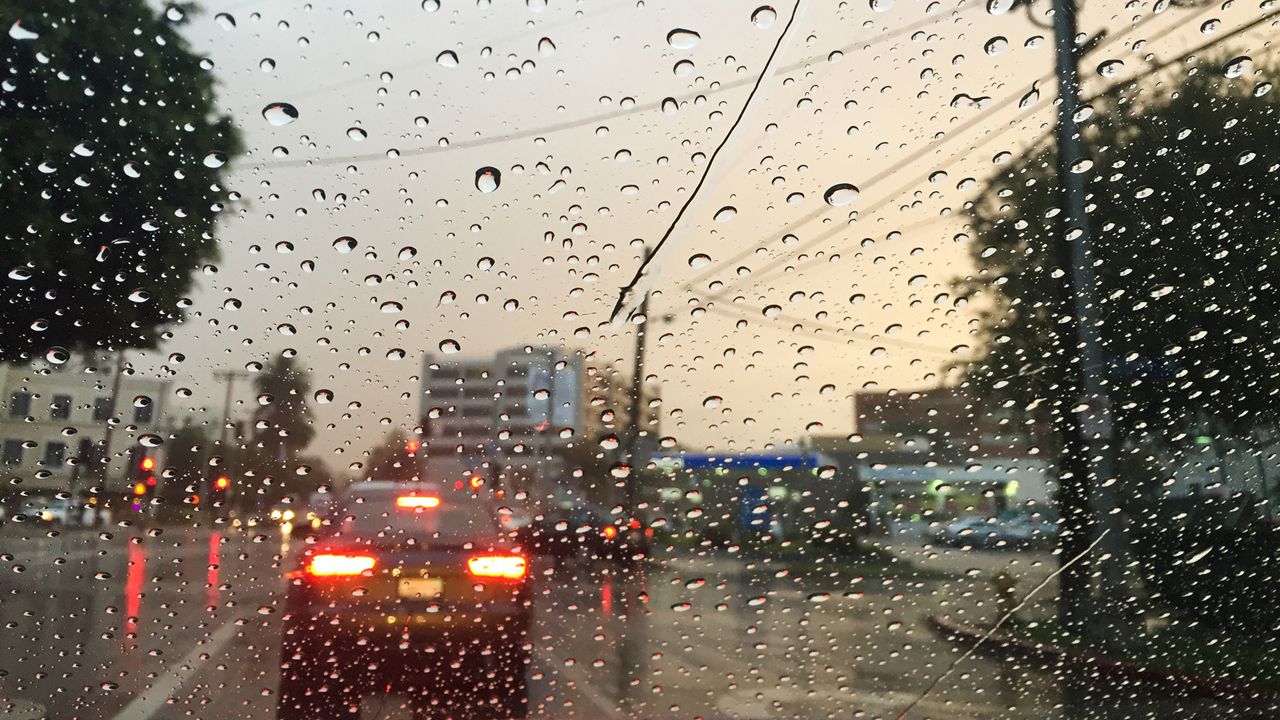This rainy season has been bountiful for California with Atmospheric River storms dumping flooding rains and several feet of snow in the Sierra. Will these storms put an end to this three-year-old drought?
The table below shows a cross section of Southern California’s seasonal “To Date” averages vs what we have “So Far” this season. All of these cities have close to 2+ inches more than what we get on average. It looks good on paper.
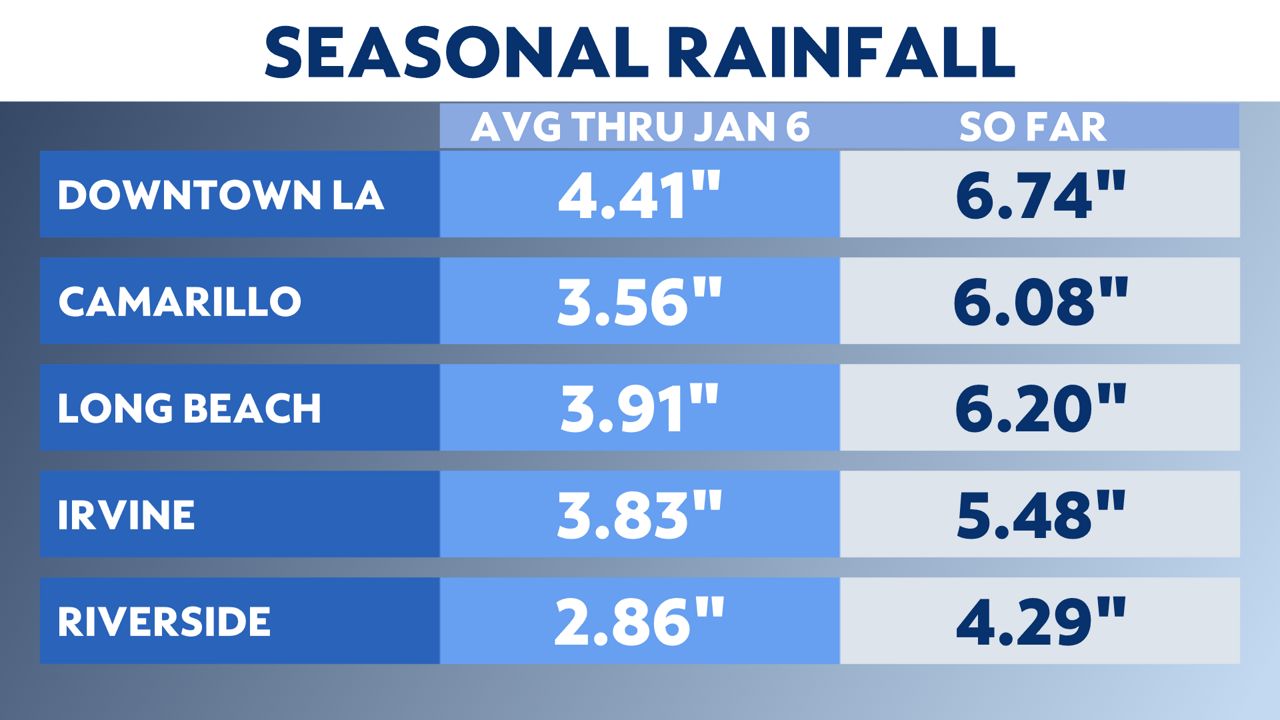
However, when put in perspective, a different picture emerges. What happens if we don’t get anymore storms between now and April? With today’s climate, this is extremely possible. Last year, we barely had any rain from January through March. Downtown LA only got .34 inches of rain from Jan. 1 through March 27.
If the storm door was closed for the rest of the rainy season, we would still fall anywhere from five to nine inches below average. When you look at it this way, then the answer is no. The recent heavy rains would not end the drought.
Even if we got normal rainfall through the rest of the rainy season, we would only finish the rain year with a surplus of 1.5 to 2.5 inches of rain. That is not enough rain to end the drought.
The last major (six year) drought for Southern California ended after the 2017 rainy season. Look at the graph below. We had five years of below average rainfall, then a great year, then bad year, then two good years.
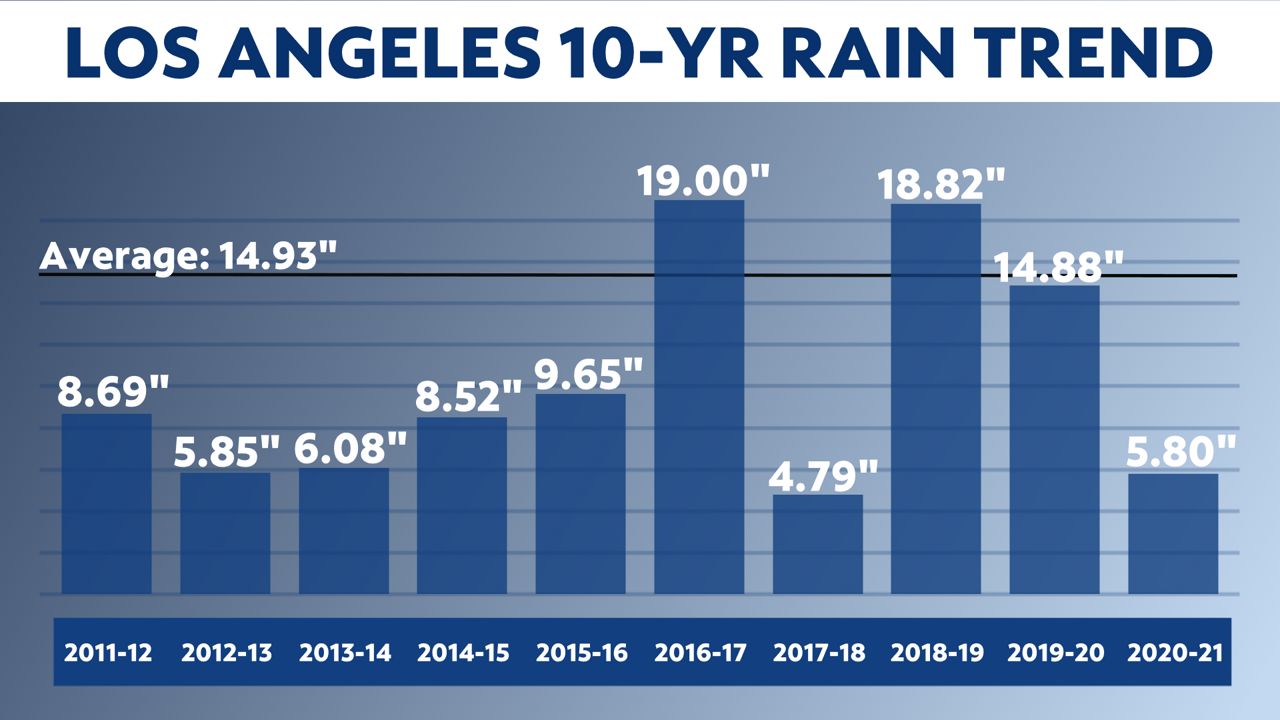
There is a growing group of people who say that the 2011-2016 drought never ended. There was just a pause in the drought after two consecutive good water years.
According to the USGS, one solid storm will not end a drought. “A single soaking rain will provide lasting relief from drought conditions, but multiple such rains over several months may be required to break a drought and return conditions to within the normal range. Even when a drought has been broken, it may not be truly over...conditions in streams, reservoirs, and groundwater to also return to normal.
In California we have to add snow pack into the equation. The snow pack is what we rely on to get us through the dry months each year. Melt-off runs into the reservoirs during Spring and Summer.
So, there is no simple answer to the question, How much rain is needed to end a drought? Reservoirs, groundwater and snow pack have to all be replenished to end a drought.
Right now, California reservoirs are on average 33% below their historical average capacity. 64% of groundwater wells are below normal levels.
The snow pack in the Sierra is 191% of normal for this date, which is 76% of the normal snow pack measure on April 1. If we didn’t get anymore snow, we would have another below average year.
One storm will never end a drought. That is certain. In order to end a drought, the snow pack needs to at or above the seasonal average ending on April 1. The reservoirs need to get back to historical averages and so does the groundwater.
Even then, it is more complicated. There is a growing group of people who believe this current drought is an extension of the 2011-2016 drought. We live in a dry climate that is interrupted by wet years.
Below is the drought monitor before the Atmospheric River storm hit California. Notice the Exceptional Drought in the middle of California.
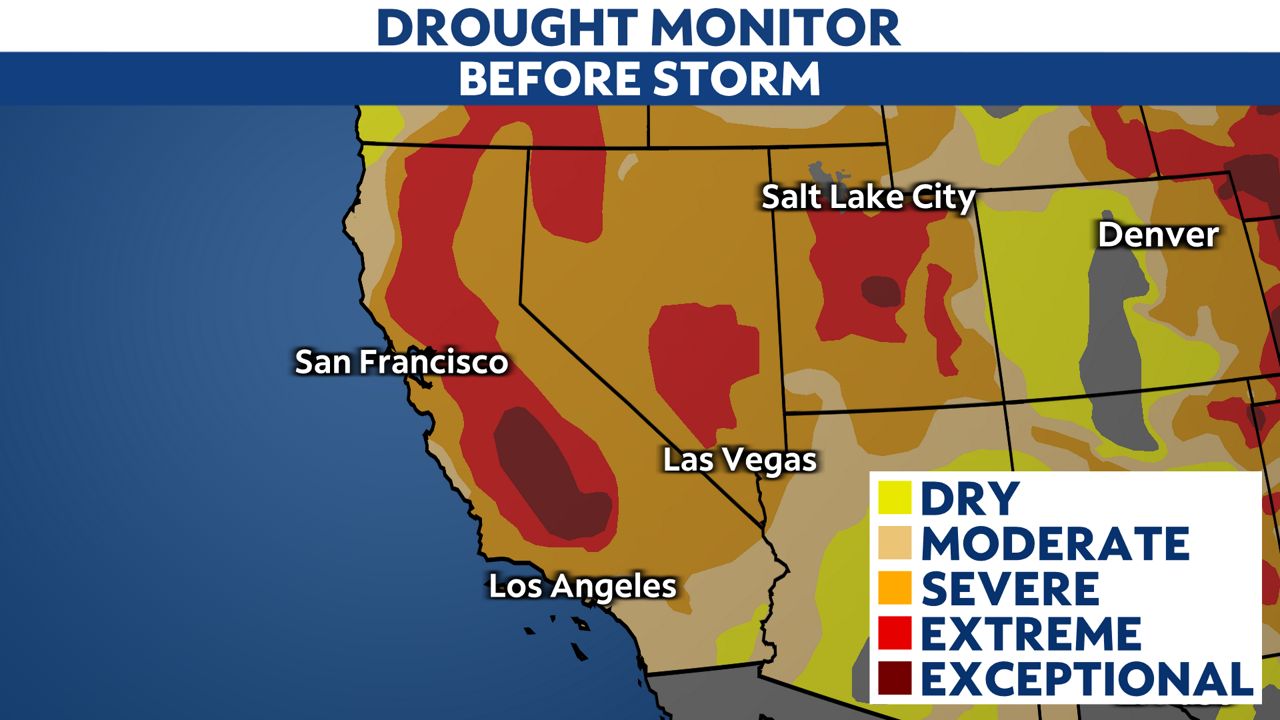
Now look at the same area in central California after the big storm. It just improved by one category to Extreme drought. Almost all of California still remains in a Moderate to Extreme drought. It would take four or five more Atmospheric River storms that dump rain and snow on California before April to see a big improvement on the Drought Monitor.
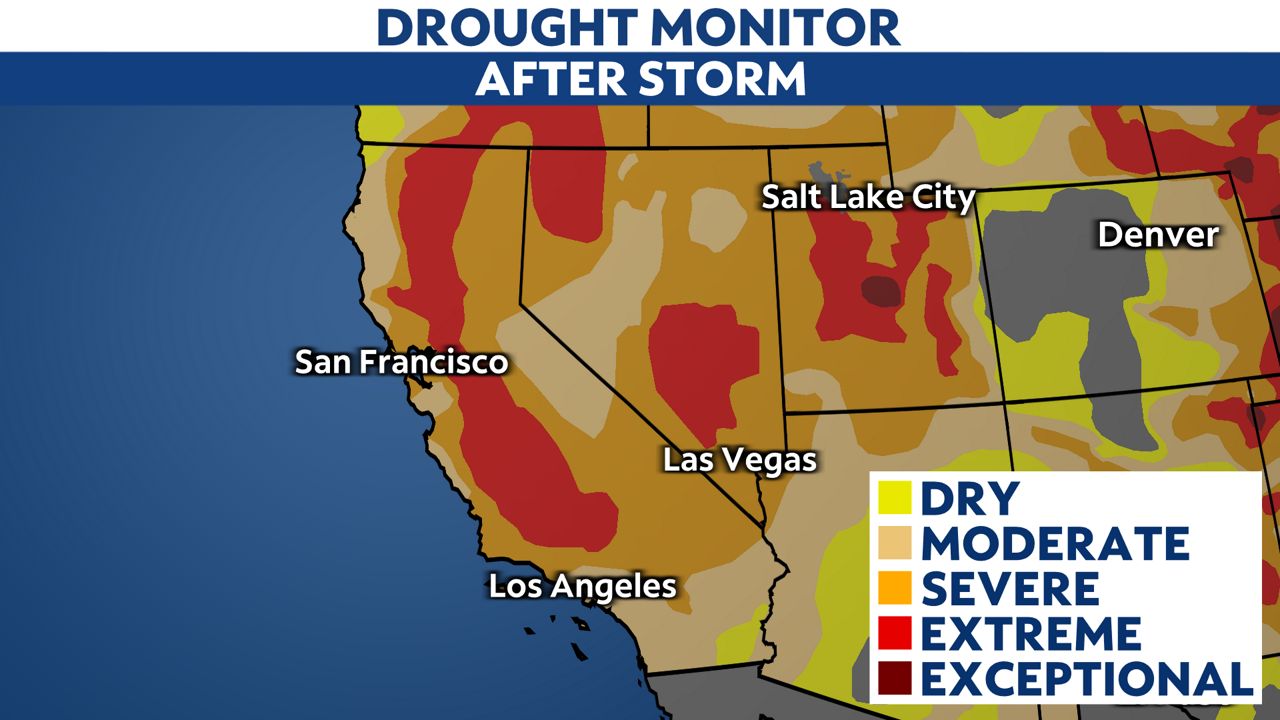
Our team of meteorologists dives deep into the science of weather and breaks down timely weather data and information. To view more weather and climate stories, check out our weather blogs section.



